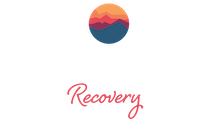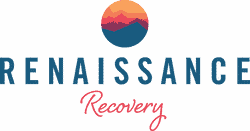Alcoholic nose is the informal name for a skin condition associated with the swollen appearance of the nose and surrounding cheek area.
The medical name for alcoholic nose is rhinophyma. Despite the enduring belief that alcohol use disorder (alcoholism) causes rhinophyma, recent research disproves the connection.
Need help getting addiction treatment?
How did the myth of alcohol nose start, then, and why do people still view this medical condition as emblematic of alcohol abuse?
Before we jump in, it’s important to note that if you’re looking for an alcohol rehab in California, our team is here for you.
What is an Alcoholic’s Nose?
Rhinophyma is classified as a part of rosacea subtype 3. This subtype typically stems from chronic, untreated rosacea rather than alcohol use disorder.
In addition to alcoholic’s nose, rhinophyma is also known as:
- Red nose alcohol
- Alcohol nose
- Potato nose
- Whiskey nose
- Drinker’s nose
- Gin blossoms
The association between rhinophyma and alcoholism was accelerated when American entertainer W.C. Fields referred to his rosacea with rhinophyma as gin blossoms. Fields had a well-publicized appetite for alcohol and, while this didn’t cause his rosacea, heavy drinking would likely have inflamed the condition. Any food or drink that causes the face to flush is inadvisable for those with rosacea.
So, alcoholic nose is not caused by alcohol abuse. Rhinophyma is a rare condition that mainly affects Caucasian males aged 50 to 70.
The most common symptoms of rhinophyma are as follows:
- Thickening of the skin
- Reddening of the skin
- Broken blood vessels
- Scarring of the skin
- Pitting of the skin
- Bulbous or deformed nose
According to AAD (American Academy of Dermatology Association), if severe rosacea spreads to the nose, this is termed rhinophyma. The literal meaning of this clinical term is “nose swelling.” AAD reports that someone with this condition should not be assumed to suffer from alcohol use disorder.
Not only is the term alcoholic nose an urban legend, but it also perpetuates the stigma of alcoholism. The term alcoholism is not used in a medical or recovery setting. The clinical descriptor for alcohol, alcohol use disorder, is a chronic and relapsing brain condition diagnosed according to the criteria in APA’s DSM-5-TR.
What Is the Difference Between Rosacea and Rhinophyma?
Rosacea is a common skin disease characterized by a redness that first appears on the nose and cheeks. Rosacea can spread to other areas, including:
- Chest
- Back
- Neck
- Chin
- Forehead
In most cases of rosacea, symptoms occur gradually in stages that progress. A typical progression might include:
- Persistent redness
- Stinging or burning sensation on the skin
- Raised skin patches (plaques)
- Lesions
- Flushing
- Pimples
- Skin bumps filled with pus
- Broken blood vessels
- Oily skin
- Thickened skin
- Rough skin
- Edema (swelling due to fluid buildup)
While the cause of rosacea is unknown, it is believed that environmental and genetic factors can increase your risk profile for this distressing skin condition.
There is no cure for rosacea, but you can mitigate flare-ups. One of the most effective ways to achieve this is to learn what triggers rosacea symptoms. Known inflammatory factors include:
- Consuming alcohol
- Eating hot or spicy food
- Drinking hot beverages
- Harsh facial products
- Stress
- Anxiety
- Exposure to extreme hot or cold temperatures
- Vigorous exercise
- Spending time in the sun
- Taking a hot bath
Rhinophyma is the final stage of rosacea. This severe late stage can cause medical problems if left untreated.
How Does Alcohol Impact Rosacea?
Alcohol use does not cause rosacea or rhinophyma, despite the nickname of alcoholic’s nose. That said, alcohol can aggravate this condition.
Consuming alcohol causes the blood vessels in your body to enlarge. If blood vessels are more open, more blood can flow to the skin’s surface. This flushed look is sometimes referred to as the alcohol flush.
Although the redness triggered by this condition can spread throughout the body, it is normally most pronounced on the face, chest, and shoulders.
Medical professionals suggest that those suffering from rhinophyma:
- Drink alcohol in extreme moderation
- Do not use alcohol for cooking
- Drink glasses of water in between alcoholic beverages
- Dilute alcoholic drinks with soda water
- Never drink red wine
- Quit drinking alcohol
A recent National Rosacea Society survey found that 90% of respondents who limited alcohol consumption noticed a reduction in outbreaks of rosacea. Only 10% of those surveyed said alcohol had no effect at all on their rosacea.
Treatment for Rhinophyma
The most effective treatment options for alcoholic’s nose are medication and surgery, depending on the severity of the condition.
Most mild cases of rhinophyma respond favorably to treatment with antibiotics or topical anti-inflammatories.
If the condition progresses, surgery is usually recommended. If rhinophyma is left untreated, this can cause obstruction of the nostrils, introducing breathing difficulties.
Additionally, diet and nutrition should be considered. Common triggers for rhinophyma include:
- Sun exposure
- Certain exercise
- Hot beverages
- Temperature shifts
- Spicy food
- Stress
The Myth of Alcoholic Nose Perpetuates the Stigma of Alcoholism
Alcoholic’s nose may not be caused by alcohol abuse, but the condition of rhinophyma remains widely linked with alcoholism.
Firstly, this urban legend about the cause of rhinophyma means that many people diagnosed with this condition feel more self-conscious than ever about their appearance due to the widespread misconceptions about alcoholic’s nose.
More widely, when those with rhinophyma withdraw socially or avoid going out completely due to the false beliefs many hold about this condition, this shines a light on the continued stigmatization of alcohol addiction.
Both rhinophyma and alcohol use disorder are incurable medical conditions, but both respond positively to treatment.
Treatment for Alcohol Use Disorder
Before engaging with treatment for alcohol use disorder, you must first detox. If you undergo detoxification at a licensed medical detox center, you will have the clinical and emotional care you need to streamline alcohol withdrawal.
There are three medications approved by the FDA that can lessen the intensity of cravings and withdrawal symptoms:
- Disulfiram
- Naltrexone
- Acamprosate
These medications can also be used throughout ongoing treatment to promote abstinence.
After detox, you will pursue a personalized combination of the following treatments:
- Group counseling
- Individual counseling
- MAT (medication-assisted treatment)
- Psychotherapy (CBT and DBT)
- Family therapy
- Holistic therapy
Whether you require inpatient treatment or an outpatient program, you can build a firm foundation for ongoing recovery at rehab.



